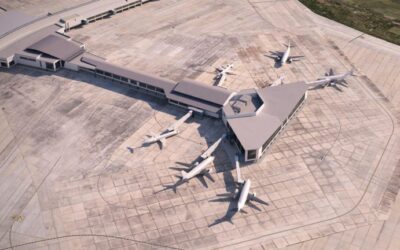The Wayne County Airport Authority and Michigan State University Extension Office have joined forces to grow, harvest and process bioenergy crops on airport-owned property.
The initiative, the AgriEnergy Technology Demonstration project, is the first of its kind in the Midwest and is supported by a $476,000 grant awarded by the Michigan Energy Office of the Michigan Economic Development Corp.
“How does aviation protect itself in the future against the depletion of fossil fuels and the uncertainty of foreign sources of energy?” asks WCAA Interim CEO Genelle M. Allen. “Part of the answer may be to grow it.
“WCAA has been interested in exploring the potential of developing airport-owned property around both airports for bioenergy production for some time,” he continues. “If successful, this project could attract businesses to the vicinity of the airports that would produce alternative fuels for use in aircraft and other vehicles. This project has possibilities for not only bringing economic development to Southeast Michigan, but also protecting land around our airports from further encroachment.”
The two airports under the WCAA’s purview, Detroit Metropolitan Wayne County (DTW) and Willow Run (YIP), have approximately 1,700 acres of property that is potentially suitable for bioenergy cropping. The WCAA has leased to MSU Extension 3 acres of the land, on which biofuel crops have been planted and will soon be harvested, refined and tested. Crops include canola and oriental mustard seed. The WCAA will provide access to and use of the acreage at its airports for a portion of the project, and the MSU Extension will handle overall management of the grant.
“This grant provides Michigan an opportunity to transition into the green energy sector with the potential to reduce our dependence on foreign oil imports and create needed jobs,” says MSU Extension Project Manager Dennis Pennington.
He also says he expect the project to help them be able to determine the economic impact of growing, refining, storing and transporting the biomass as a “drop in” fuel alternative (compatible with existing fuel systems).





